18 September 2024
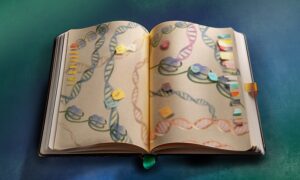
Researchers have identified key cellular control sites that regulate gene expression and prevent the activation of ancient viral sequences in the genome.
SCIENCE & TECHNOLOGY
15 July 2022
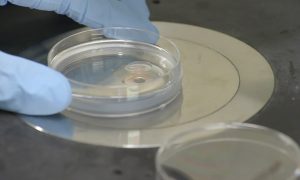
The GEEF facility at EMBL Rome supports scientists worldwide with scientific expertise and state-of-the-art gene editing technologies.
LAB MATTERSSCIENCE & TECHNOLOGY
2022
lab-mattersscience-technology
6 September 2021
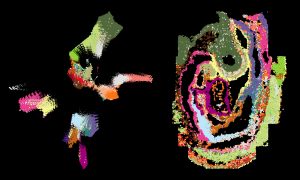
Researchers have combined spatial gene expression information with single-cell genomics data to create a high-resolution atlas of mouse organogenesis.
SCIENCE & TECHNOLOGY
2021
sciencescience-technology
3 July 2020
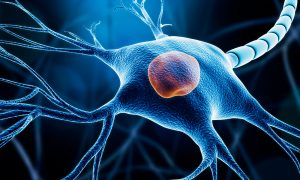
Scientists at EMBL Heidelberg have investigated stem cells and how they differentiate to become neurons. Their approach included an assessment of the complex interplay of molecules during the differentiation process and generated fundamental new insights into the role of a protein called Sox2 in…
SCIENCE & TECHNOLOGY
2020
sciencescience-technology
29 June 2020
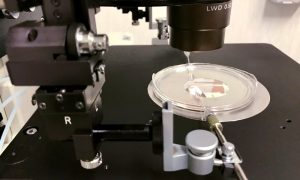
To study how SARS-CoV-2 infects cells, the Gene Editing and Embryology Facility (GEEF) at EMBL Rome will generate mice that express a human version of a protein called ACE2. The mouse line will be shared with preclinical research collaborators carrying out vaccine and antibody trials, and with the…
SCIENCE & TECHNOLOGY
2020
sciencescience-technology
15 May 2020
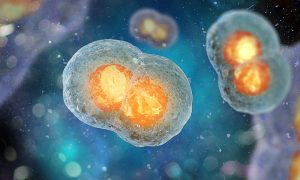
Researchers from the Sharpe group at EMBL Barcelona have published a method to track the developmental history of a cell using the gene editing tool CRISPR–Cas9, but without the need to create transgenic organisms.
SCIENCE & TECHNOLOGY
2020
sciencescience-technology
19 November 2019
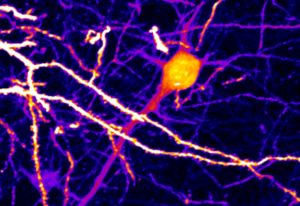
The brain is the most complex organ in the human body. Yet despite it being the organ that makes us conscious beings – and despite the fact that researchers have been studying it for generations – it’s still a constant source of surprise. To help lift the veil on some of its mystery, Lina…
SCIENCE & TECHNOLOGY
2019
picture-of-the-weekscience-technology
30 October 2019

Nadia Rosenthal describes how she built EMBL Rome’s mouse house
PEOPLE & PERSPECTIVES
2019
alumnipeople-perspectives
26 August 2019

Klaus Rajewsky recalls the pioneering spirit of EMBL Rome’s first years
PEOPLE & PERSPECTIVES
2019
alumnipeople-perspectives
27 June 2019
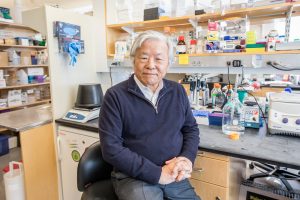
Nobel prize laureate Susumu Tonegawa describes his work in memory research over the past decade
LAB MATTERS
24 April 2018
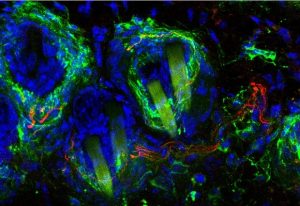
Scientists at EMBL Rome develop new method that uses light to manage neuropathic pain in mice
SCIENCE & TECHNOLOGY
2018
sciencescience-technology
2 February 2014
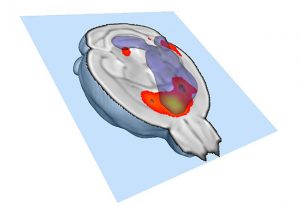
In many people with autism and other neurodevelopmental disorders, different parts of the brain don’t talk to each other very well. Scientists have now identified, for the first time, a way in which this decreased functional connectivity can come about. In a study published online today…
SCIENCE & TECHNOLOGY
2014
sciencescience-technology
10 November 2013
What do bullies and sex have in common? Based on work by scientists at the European Molecular Biology Laboratory (EMBL) in Monterotondo, Italy, it seems that the same part of the brain reacts to both. In a study published today in Nature Neuroscience, the researchers found that – at least in…
SCIENCE & TECHNOLOGY
2013
sciencescience-technology
28 February 2013
During embryo development, genes are dynamically, and very precisely, switched on and off to confer different properties to different cells and build a well-proportioned and healthy animal. Fgf8 is one of the key genes in this process, controlling in particular the growth of the limbs and…
SCIENCE & TECHNOLOGY
2013
sciencescience-technology
20 March 2012
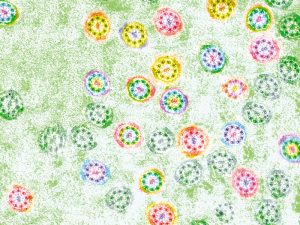
As spring arrives, flowers seem to bloom everywhere – even under the microscopes at the European Molecular Biology Laboratory (EMBL) in Heidelberg, Germany. But the ‘flowers’ in this picture actually help an animal, not a plant, to pass on its genes. The image, which has been false-coloured…
SCIENCE & TECHNOLOGY
2012
picture-of-the-weekscience-technology
20 March 2011
Scientists at the European Molecular Biology Laboratory (EMBL) in Heidelberg, Germany, have developed a new method for studying gene regulation, by employing a jumping gene as an informant. Published online today in Nature Genetics, the new method is called GROMIT. It enables researchers to…
SCIENCE & TECHNOLOGY
2011
sciencescience-technology
25 August 2010
Fear can make you run, it can make you fight, and it can glue you to the spot. Scientists at the European Molecular Biology Laboratory (EMBL) in Monterotondo, Italy and GlaxoSmithKline in Verona, Italy, have identified not only the part of the brain but the specific type of neurons that determine…
SCIENCE & TECHNOLOGY
2010
sciencescience-technology
10 December 2009
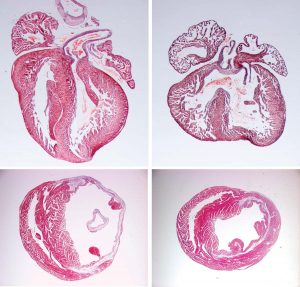
Almost a century after it was discovered in fruit flies with notches in their wings, the Notch signalling pathway may come to play an important role in the recovery from heart attacks. In a study published today in Circulation Research, scientists at the European Molecular Biology Laboratory (EMBL)…
SCIENCE & TECHNOLOGY
2009
sciencescience-technology
21 September 2009
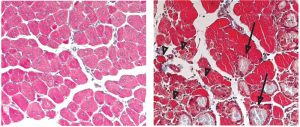
For scientists at the European Molecular Biology Laboratory (EMBL) in Monterotondo, Italy, what seemed like a disappointing result turned out to be an important discovery. Their findings, published online this week in the journal Proceedings of the National Academy of Sciences (PNAS), provide…
SCIENCE & TECHNOLOGY
2009
sciencescience-technology
13 September 2009
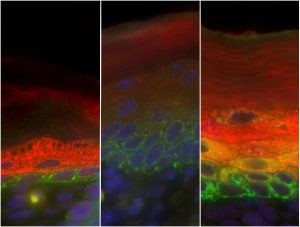
Stem cells have a unique ability: when they divide, they can either give rise to more stem cells, or to a variety of specialised cell types. In both mice and humans, a layer of cells at the base of the skin contains stem cells that can develop into the specialised cells in the layers above.…
SCIENCE & TECHNOLOGY
2009
sciencescience-technology
20 July 2008
Mouse mothers-to-be have a remarkable way to protect their unborn pups. Because the smell of a strange male’s urine can cause miscarriage and reactivate the ovulatory cycle, pregnant mice prevent the action of such olfactory stimuli by blocking their smell. Researchers from the European…
SCIENCE & TECHNOLOGY
2008
sciencescience-technology
8 January 2008
Researchers from the European Molecular Biology Laboratory (EMBL) have discovered that proteins that regulate the body’s iron household play a vital role in making sure enough nutrients and water are absorbed in the intestine. Mice lacking these proteins suffer from weight loss and…
SCIENCE & TECHNOLOGY
2008
sciencescience-technology
8 July 2007
Researchers from the European Molecular Biology Laboratory (EMBL) and the University of Michigan have discovered a gene that protects us against a serious kidney disease. In the current online issue of Nature Genetics they report that mutations in the gene cause nephronopthisis (NPHP) in humans and…
SCIENCE & TECHNOLOGY
2007
sciencescience-technology
5 June 2007
Why does the same diet make some of us gain more weight than others? The answer could be a molecule called Bsx, as scientists from the European Molecular Biology Laboratory (EMBL), the German Institute for Nutrition (DIFE), Potsdam, and the University of Cincinnati report in the current issue of…
SCIENCE & TECHNOLOGY
2007
sciencescience-technology
3 June 2007
People who suffer from anxiety tend to interpret ambiguous situations, situations that could potentially be dangerous but not necessarily so, as threatening. Researchers from the Mouse Biology Unit of the European Molecular Biology Laboratory (EMBL) in Italy have now uncovered the neural basis for…
SCIENCE & TECHNOLOGY
2007
sciencescience-technology
14 March 2007
Inflammatory bowel diseases, such as Crohn’s disease and Ulcerative Colitis, severely impair the lives of more than four million people worldwide. The development of effective therapies against these diseases requires an understanding of their underlying molecular mechanisms. Researchers from…
SCIENCE & TECHNOLOGY
2007
sciencescience-technology
8 January 2007
Phone numbers, the way to work, granny’s birthday – our brain with its finite number of nerve cells can store incredible amounts of information. At the bottom of memory lies a complex network of molecules. To understand how this network brings about one of the most remarkable capacities of…
SCIENCE & TECHNOLOGY
2007
sciencescience-technology
2 November 2006
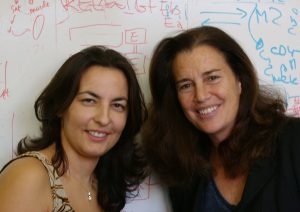
Muscle wasting can occur at all ages as the result of genetic defects, heart failure, spinal injury or cancer. A therapy to cure the loss of muscle mass and strength, which has a severe impact on patients’ lives, is desperately sought. Blocking a central signal molecule, researchers from the…
SCIENCE & TECHNOLOGY
2006
sciencescience-technology
3 September 2006
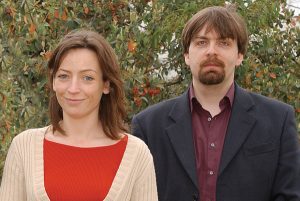
Blood cells have limited lifespans, which means that they must be continually replaced by calling up reserves and turning these into the blood cell types needed by the body. Claus Nerlov and his colleagues at the European Molecular Biology Laboratory (EMBL) unit in Monterotondo, Italy, in…
SCIENCE & TECHNOLOGY
2006
sciencescience-technology
10 April 2006
Today three research organisations announce the merging of their expertise to fight cardiovascular diseases, which are among the most common health problems and causes of death in the world. The Magdi Yacoub Institute (MYI) at the UK’s Harefield Heart Science Centre, Imperial College London,…
CONNECTIONSLAB MATTERS
2006
connectionslab-matters
25 January 2005
One of the most basic yet least understood processes in our bodies is how cells crawl along tissues. This behavior is essential to the formation of an embryo and other processes, but it must be tightly controlled. A disturbance can lead to the spread of cancer cells or diseases like Spina…
SCIENCE & TECHNOLOGY
2005
sciencescience-technology
No results found

















